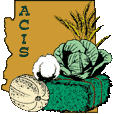 |
|
|
|

|
|||
| |
|||
Sprangletop has become increasingly widespread in Arizona mostly because of its growth habits and tolerance to many commonly used herbicides. It is in the Leptochloa genus which is derived from the Greek words leptos (thin) and chloa (grass). There are more than 150 species of sprangletop worldwide but only three in Arizona and two in Yuma County. The two that are the most common in the low desert are Mexican Sprangletop, which is Leptochloa uninervia and Red Sprangletop, Leptochloa filiformis. A third species, Bearded Sprangletop, Leptochloa fascicularis, is more common at higher elevations of 1500 feet or higher. It is not uncommon to find both Red and Mexican Sprangletop in the same field and it is not hard to distinguish them when they are side by side. Red Sprangletop has a light green leaf blade which is similar in width to watergrass and barnyardgrass. It has very fine hairs and very small and fine branches and spiklets. It also has a long membranous ligule. The name
To contact Barry Tickes go to: btickes@ag.arizona.edu. |
|||
| Back | |||
For questions or comments on any of the topics please contact Marco Pena at the Yuma Agricultural Center. |
|||
| Home | Cotton
| Veggies | Forages
| Grains | Citrus
| Crop x Crop Insects | Diseases| Weeds | Pesticides | Economics | News | Weather | Research | Photos | Contacts | General Info. Copyright © 2001 University of Arizona, College of Agriculture and Life Sciences Webmaster: Al Fournier (acis@ag.arizona.edu) |
|||
